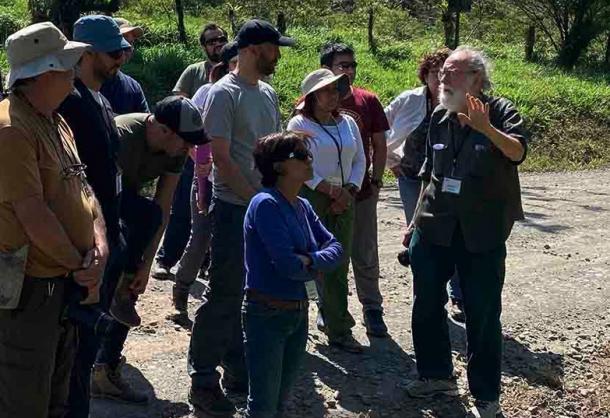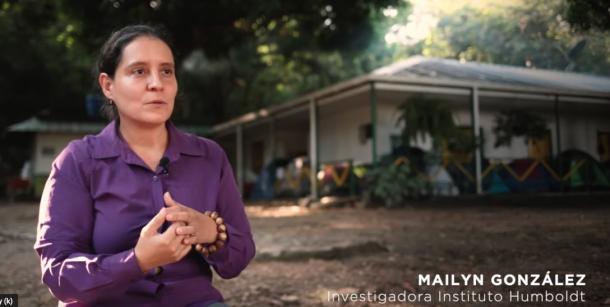
Dan Janzen speaks to the delegation from Colombia and Ecuador, February 2020. Photo by Alejandro Masís.
In February of 2020, just weeks before the pandemic shut down most everything, a delegation made up of representatives from research institutes, government, companies, academia, organizations, and others from Colombia and Ecuador visited Área de Conservación Guanacaste (ACG). Their goal was to learn more about the successes and failures of conservation in Costa Rica, and particularly about the BioAlfa project, which aims to identify all multicellular species in Costa Rica through DNA barcoding. At the time, Colombia was preparing to develop a project similar to BioAlfa in its 127-hectare La Tribuna Eco-reserve that is located in the Huila tropical dry forest. The pandemic slowed its progress, but Colombia’s Fibras project is well under way. The initiative uses university students as “Biomonitors”, and these biomonitors are modeled directly off the work of the parataxonomists in ACG. As ACG Communications Director Melissa Espinoza writes on the ACG website, “For ACG, it is important to share positive experiences with those who are willing to learn about them and implement them, so we are very happy that Colombia is starting with biomonitors to accelerate their biodiversity inventories and favor their conservation and sustainable development.” The Humboldt Institute of Colombia, which runs the project, recently released a short film discussing how inhabitants of the Huila region became biomonitors and now work with university students on this joint research initiative to learn more about the biodiversity in La Tribuna. You can view the video (in Spanish) here.

Mailyn González, speaking about the biomonitors in the recent video produced by the Humboldt Institute. Photo courtesy of the Humboldt Insitute.